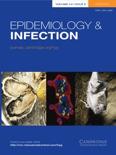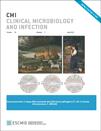Parfitt, Elizabeth C.
Person Preferred Name
Elizabeth C. Parfitt
Related Works
Content type
Digital Document
Abstract
Background: The epidemiology of Streptococcus anginosus group (SaG) bloodstream infections (BSI) has not been well defined in non-selected populations. The objective of this study was to determine the incidence, risk factors and outcome associated with SaG BSI.
Methods: Population-based surveillance was conducted in the western interior region of British Columbia, Canada between 1 April 2010 and 31 March 2017.
Results: Forty-six episodes were identified for an overall annual incidence of 3.7 per 100,000 population. The incidence increased with older age and males were at significantly higher risk (5.2 vs. 2.1 per 100,000; incidence rate ratio, 2.5; 95% confidence interval, 1.3–5.1; p = .004). Nearly one-half (22; 48%) of patients had no chronic co-morbid illness, whereas 17 (40%) had 1–2, six (13%) had 3–4 and one (2%) had 5 Charlson scores with diabetes and cancer being the most common. Predisposing factors for development of SaG BSI were identified in 30 (65%) cases. The gastro-intestinal tract was the most common focus of infection (13; 28%) followed by cardiovascular and skin/soft tissue (six cases each; 13%) and in seven (15%) cases no focus was identified. Drainage procedures were required in 21 (46%) patients of whom seven (15%) patients had percutaneous drains and 14 (30%) required surgical operations. Forty-one (89%) patients were admitted to hospital for a median hospital length stay of 11 (interquartile range, 7–18) days. The in-hospital and 30-day all cause case-fatality rates were 3/41 (7%) and 4/46 (9%), respectively.
Conclusion: SaG BSI is an important cause of morbidity and mortality.
Origin Information
Content type
Digital Document
Abstract
Purpose: Inhospital death is commonly used as an outcome measure. However, it may be a biased measure of overall fatal outcome. The objective of this study was to evaluate inhospital death as a measure of all-cause 30-day case fatality in patients with bloodstream infection (BSI).Patients and methods: A population-based surveillance cohort study was conducted, and patients who died in hospital within 30 days (30-day inhospital death) were compared with those who died in any location by day 30 post BSI diagnosis (30-day all-cause case fatality).Results: A total of 1,773 residents had first incident episodes of BSI. Overall, 299 patients died for a 30-day all-cause case fatality rate of 16.9%. Most (1,587; 89.5%) of the patients were admitted to hospital, and ten (5.4%) of the 186 patients not admitted to hospital died. Of the 1,587 admitted patients, 242 died for a 30-day inhospital death rate of 15.2%. A further 47 patients admitted to hospital died after discharge but within 30 days of BSI diagnosis for a 30-day case fatality rate among admitted patients of 18.2%. Patients who died following discharge within 30 days were older and more likely to have dementia.Conclusion: The use of inhospital death is a biased measure of true case fatality.
Origin Information
Content type
Digital Document
Abstract
Although community-onset bloodstream infection (BSI) is recognized as a major cause of morbidity and mortality, its epidemiology has not been well defined in non-selected populations. We conducted population-based surveillance in the Interior Health West region of British Columbia, Canada in order to determine the burden associated with community-onset BSI. A total of 1088 episodes were identified for an overall annual incidence of 117·8/100 000 of which 639 (58·7%) were healthcare-associated (HA) and 449 (41·3%) were community-associated (CA) BSIs for incidences of 69·2 and 48·6/100 000, respectively. The incidence of community-onset BSI varied by age and gender and elderly males were at the highest risk. Overall 964 (88·6%) episodes resulted in hospital admission for a median length of stay of 8 days; the total days of acute hospitalization associated with community-onset BSI was 13 530 days or 1465 days/100 000 population per year. The in-hospital mortality rate was 10·6% (102/964) and this was higher for HA-BSI (72/569, 12·7%) compared to CA-BSI (30/395, 7·6%, P = 0·014) episodes. Community-onset BSI, especially HA-BSI, is associated with a major burden of illness.
Origin Information
Content type
Digital Document
Abstract
Objectives
Diagnosis of a bloodstream infection (BSI) requires a positive blood culture. However, low culturing rates will underestimate the true incidence of BSI and high rates may increase the risk of false-positive results. We sought to investigate the relationship between culturing rates and the incidence of BSI at the population level.
Methods
Population-based surveillance was conducted in the western interior of British Columbia, Canada, between 1 April 2010 and 31 March 2017.
Results
Among 60 243 blood culture sets drawn, 5591 isolates were obtained, of which 2303 were incident, 1929 were repeat positive and 1359 were contaminants. Overall annual rates of culturing, incident, repeat positive and contaminant isolates were 4832, 185, 155 and 109 per 100 000 population, respectively. During the 84-month study, there was an increase in the culturing rate that reached a plateau at 48 months (5403 cultures per 100 000 per year). The rate of both repeat isolates and contaminants increased linearly with an increasing culturing rate. However, the incident isolate rate reached an inflection point at a rate of approximately 5550 per 100 000 annually, at which point the increase in incident isolates per culture sample was diminished. At a culturing rate above 6123 per 100 000 per year, the number of repeat isolates exceeded that of incident isolates.
Conclusions
The determined incidence of BSI will increase with increased culturing in a population. Further studies are needed to explore optimal BSI culturing rates in other populations.
Origin Information
Content type
Digital Document
Abstract
Background: Klebsiella species are among the most common causes of bloodstream infection (BSI). However, few studies have evaluated their epidemiology in non-selected populations. The objective was to define the incidence of, risk factors for, and outcomes from Klebsiella species BSI among residents of the western interior of British Columbia, Canada.
Methods: Population-based surveillance was conducted between April 1, 2010 and March 31, 2017.
Results: 151 episodes were identified for an incidence of 12.1 per 100,000 population per year; the incidences of K. pneumoniae and K. oxytoca were 9.1 and 2.9 per 100,000 per year, respectively. Overall 24 (16%) were hospital-onset, 90 (60%) were healthcare-associated, and 37 (25%) were community-associated. The median patient age was 71.4 (interquartile range, 58.8–80.9) years and 88 (58%) cases were males. Episodes were uncommon among patients aged < 40 years old and no cases were observed among those aged < 10 years. A number of co-morbid medical illnesses were identified as significant risks and included (incidence rate ratio; 95% confidence interval) cerebrovascular accident (5.9; 3.3–9.9), renal disease 4.3; 2.5–7.0), cancer (3.8; 2.6–5.5), congestive heart failure (3.5; 1.6–6.6), dementia (2.9; 1.5–5.2), diabetes mellitus (2.6; 1.7–3.9), and chronic obstructive pulmonary disease (2.3; 1.5–3.5). Of the 141 (93%) patients admitted to hospital, the median hospital length stay was 8 days (interquartile range, 4–17). The in-hospital and 30-day all cause case-fatality rates were 24/141 (17%) and 27/151 (18%), respectively.
Conclusions: Klebsiella species BSI is associated with a significant burden of illness particularly among those with chronic co-morbid illnesses.
Origin Information





